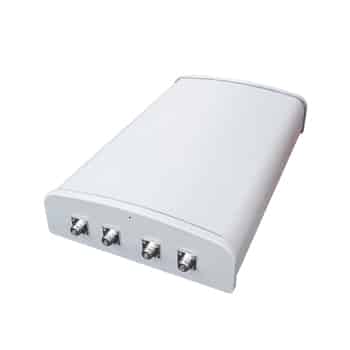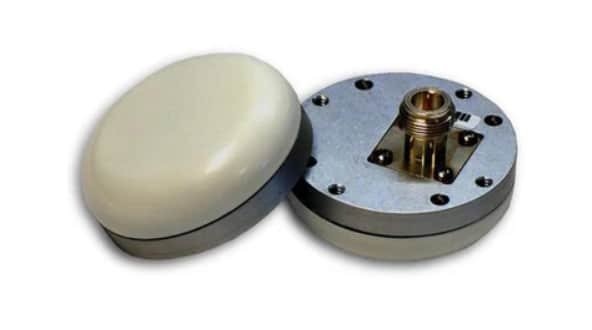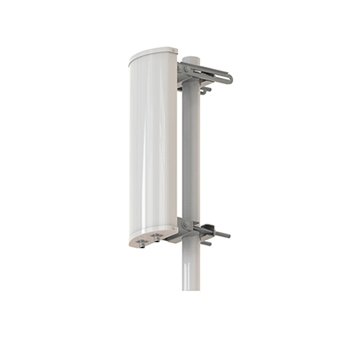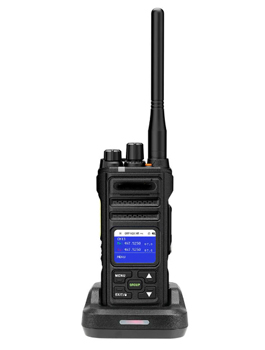
Wireless communication has developed in leaps and bounds over recent times. A wide variety of antennas are available in the market today for different applications. Panel antennas are one such type that is used to obtain optimal signal strength and direction. Basically, a panel antenna consists of a dipole placed in front of a flat-panel reflector and is used in many applications from cellular networks to wireless broadband. Panel antennas are versatile in their minimalistic design and their ability to be used for both fixed and portable applications in both indoor and outdoor environments.
In this article, we provide you with a comprehensive understanding of their basic definition to detailed design aspects, operational principles, key features, uses, types, comparison with some other antennas, and installation guidelines.
Table of Contents
ToggleDesign and structure of panel antenna
The design and structure of a panel antenna depend on several factors like frequency range, gain, beamwidth, polarization, and impedance matching. Panel antennas can come in various designs such as patch antennas, microstrip antennas, slot antennas, etc. A few of the most commonly used materials for the substrate are FR-4, Rogers, and Teflon. When the design and structure of a panel antenna are determined, environmental factors like durability, weather resistance, and mounting options also need to be considered. Panel antennas consist of multiple elements or panels for transmitting or receiving signals in a specific direction which are arranged in a grid pattern. They generally come in rectangular or square shape which creates a larger surface area and helps to increase the gain of the antenna. The compact and minimalistic design makes them versatile for many use cases.
How panel antennas work
Panel antennas are made up of multiple radiating elements that are arranged in a specific array in a flat panel and these elements are connected to a feed network to supply power to the antenna. The radiating elements in a panel antenna are generally rectangular or square in shape and the overall performance and directionality of the antenna depends on the arrangement and configuration of the radiating elements.
Key Features of Panel Antennas
Directional Coverage
Panel antennas generally have a narrow beamwidth and hence they radiate and receive signals in a specific direction. This is a highly directional antenna focusing the signal transmission and receival to a specific area. Hence, panel antennas are widely used in point-to-point and point-to-multipoint wireless communication systems. Coverage area of a panel antenna is lower due to its high directionality. To cover a 360 degree coverage area multiple panel antennas need to be deployed. However, due to high directivity and narrow beamwidth, they are able to transmit and receive signals over a long distance.
High Gain
Since panel antennas have a narrow beamwidth that is focused on a specific region, the gain of panel antennas is usually on the higher end. However, panel antennas can be found with gain as low as 6 to 10 dB to as high as around 23 dB. High gain of panel antennas makes them more resistant towards interference and hence makes them ideal for point-to-point communication systems even in long-distance range.
Beamwidth
Panel antennas are generally highly directional and hence have a narrow and focused beamwidth. This enables panel antennas to transmit and receive signals over longer distances with minimal interference. Also, the highly focused narrow beamwidth ensures that the signal strength is high, consistent, and reliable. However, due to the narrow beamwidth, panel antennas are only able to provide coverage to a limited and specific direction.
Polarization Options
Panel antennas are available in different polarizations to meet various performance requirements. Panel antennas could have vertical polarization, horizontal polarization, or a combination of the two. In vertical polarization, the electric field is oriented vertically, and this is the most common mode of polarization that has been used in traditional communication systems. In horizontal polarization, the electric field is oriented horizontally and is used when it is required to avoid interference with vertically polarized systems. In dual polarization or combined polarization, the antenna either supports both horizontal and vertical polarization or supports polarization at a specific angle. This type of polarization is commonly used for MIMO (Multiple Input Multiple Output) systems.
Compact Design
Panel antennas generally have a very simple and minimalistic design. Unlike Yagi antennas, parabolic dish antennas etc. panel antennas are less bulky. Their flat and compact design makes them easier to install and occupies less space. The design of panel antennas reduces the reliance on mechanical parts and thus minimizes wear and tear. Panel antennas are also printed as circuit boards making it possible to use them even in small electronic devices.
Ease of Installation
Due to the compact design, panel antennas are easy to install and mount in most environments. The streamlined design of panel antennas ensures that they can integrate seamlessly into any setting without being obtrusive. Panel antennas are available as plug-and-play devices making them much more convenient to install than other traditional antennas.
Versatility
Panel antennas are extremely versatile as they can be manufactured to perform at a wide variety of frequency ranges, gains, polarizations, etc. Their compact design also enables them to be easily installed in either indoor or outdoor applications. Panel antennas can be used as a single antenna or as an array of panel antennas depending on the use case. The ability to adapt and customize according to the use case makes panel antennas extremely useful in communication systems.
Indoor and Outdoor Use
Panel antennas can be used for both indoor and outdoor applications. Panel antennas that are built specifically for either indoor or outdoor use cases are available in the market today. Indoor panel antennas are usually mounted on walls or placed on flat surfaces such as desks or shelves. These are typically rectangular in shape and have multiple internal antennas that enable them to receive and transmit signals in a specific direction. A common application of indoor panel antennas is in signal boosters within buildings to improve the signal strength and quality. Outdoor panel antennas are designed to be mounted outdoors to enhance the signal strength and coverage of a wireless network. With their narrow beamwidth, they are more tolerant to interference and are commonly used in wireless communication systems such as Wi-Fi, cellular, RFID, etc. Outdoor panel antennas are generally mounted on surfaces such as rooftops, poles, and walls. Panel antennas that are made for outdoor use cases are built to be more durable and resistant to harsh weather conditions without losing its performance.
Frequency Range
Panel antennas can operate over a wide range of frequencies making them versatile for various applications. Their ability to focus high frequency signals in specific directions enhances the performance of the antenna. A few of the common frequency bands for panel antennas are 2.4 GHz which is used in WiFi (IEEE 802.11b/g/n) networks and other ISM (Industrial, Scientific, and Medical) applications, 5GHz which is used for WIFI (IEEE 802.11a/n/ac/ax) networks and other high-frequency applications, 6 GHz which is used for Wi-Fi (IEEE 802.11ax and 802.11be) and 24 GHz and above which are generally used for millimeter-wave 5G applications.
What is a panel antenna used for?
As mentioned throughout the article, panel antennas are versatile and thus are used in a wide array of applications. Few such use cases are explained below.
Cellular Communication
Panel antennas are placed in cellular base stations to provide coverage to a specific area. They are usually mounted on towers or buildings and are pointed in the direction where coverage is needed. Due to the high gain and high directionality of panel antennas, the base station will be able to provide strong and consistent coverage to the users within that area. Panel antennas are able to transmit and receive signals between base stations with high quality signal strength and high precision due to the focused beamwidth.
WiFi Networks
Panel antennas are used in WiFi networks to provide connectivity to users in a specific area. They are used in point-to-multipoint connections to transmit and receive data over long distances. With panel antennas, the signal can be focused in a specific direction and thus can provide better bandwidth, enhanced signal strength, efficient and reliable connectivity for the WiFI network. Multiple panel antennas can be used for WiFi networks in larger coverage areas. By mounting the panel antennas in an elevated location, users will be able to receive WiFi signal consistently without many obstructions and hence high quality connectivity can be ensured.
Point-to-Point Communication
This is one of the major applications of panel antennas. Panel antennas are used to establish point-to-point connections between two locations such as between two buildings within a campus, in backhaul links between two base stations, etc. Key features of panel antennas like the high directionality, high gain, and narrow beamwidth make them ideal for such point-to-point applications.
Broadcasting
Panel antennas are used for broadcasting due to their high gain and directivity. Panel antennas are able to withstand more interference and broadcast signals in a wide frequency band making them ideal for broadcasting networks. Multiple panel antennas can be used to provide broadcast coverage to a wider area.
Public Safety Networks
Panel antennas can be used for public safety systems and emergency response systems. They are able to provide coverage for a large area and thus can facilitate consistent communication even in remote or challenging environments. Panel antennas are ideal for the long distance communication and to provide high tolerance for interference required in such public safety networks.
Internet of Things (IoT) Applications
Panel antennas are available in high frequency bands and they are useful in IoT applications as they enable reliable and fast communication. Their compact design and ease of installation and maintenance make them ideal to be used in IoT applications.
Types of Panel Antennas
Flat Panel Antenna
These are also known as patch panel antennas. These antennas have a thin compact flat shape, and they usually have a dipole placed in front of a flat reflector panel. Flat panel antennas are lightweight and can easily be mounted on a wide range of surfaces. Their simple design and structure make them suitable for both portable and fixed applications. This type of panel antenna typically operates at very high frequencies and is commonly used in wireless communication systems, such as Wi-Fi networks, to provide directional coverage over a specific area. Flat panel antennas are able to facilitate high speed and reliable network connection.
Sector Panel Antenna
A sector panel antenna usually has a narrower beamwidth, typically azimuth plane 3-dB beam width providing directionality in specific sectors or angles such as 60, 90, or 120 degrees. They are commonly used in cellular networks, especially in base stations, to provide coverage to a specific area or sector and are mostly used in outdoor applications. In structure, they are long, narrow antennas with high gains and usually consist of an array of dipoles placed in front of a reflector. The performance of the antenna depends on the size and shape of the reflector as well as the height of the deployment of the antenna.
Microstrip Patch Antenna
These are also known as patch antennas. Microstrip patch panel antennas are one of the smallest and most compact among antennas available in the market. These antennas are printed on a flat substrate made of a dielectric material generally known as PCB (Printed Circuit Boards). Due to their minimalistic design and compact size, these types of antennas are used in most electronic devices like mobile phones, GPS devices, and wireless communication systems.
Advantages and disadvantages of panel antenna
Advantages
Long range coverage: Panel antennas have high directionality and hence can be used to transmit and receive signals over long distances.
Minimal interference: The high directionality and the focused beamwidth minimizes the interference from other signals. This improves the overall performance. Thus, it provides faster, stable, and consistent communication.
Ease of installation: Due to minimalistic and compact design, it is easy to install and mount on most surfaces. Printed panel antennas are easy to integrate into electronic devices. Panel antennas are also available as plug and play options making it easy to install into different applications.
Low cost: Panel antennas have a low fabrication cost and are generally easier to maintain.
Versatile: Panel antennas are extremely versatile as they can be manufactured and are available in the market in a wide range of frequencies and different polarization and radiation patterns. Panel antennas can be used both indoor and outdoor and be used in both on fixed and portable applications.
Disadvantages
Limited coverage area: Due to the narrow beamwidth, to cover a 360 degrees area, multiple panel antennas will be required.
Alignment requirements: When panel antennas are aligned, they need to be aligned in optimal orientation for maximum performance and this can require professional skills. The placement, orientation, and alignment are crucial to optimize the performance of a panel antenna.
Energy losses: Microstrip patch panel antennas specifically can have dielectric losses and conductor losses during signal transmission.
Why panel antenna is ideal for point-to-point applications
Panel antennas are often used in point-to-point communication systems, they are designed to transmit and receive signals in a specific direction, panel antennas are able to focus the signal in a specific direction due to their high directionality, high gain, and narrow beamwidth. This inherently allows for better signal strength and consistent and reliable connectivity in the communication system, thus making them ideal for point-to-point communication systems. Due to their focused narrow beamwidth, panel antennas are subject to minimal interference which is also useful in point-to-point communication systems.
SISO panel antenna vs MIMO panel antenna
SISO panel antennas use a single antenna for transmitting and receiving signals and MIMO panel antennas use multiple antennas simultaneously for signal transmission and receival. SISO panel antennas are simpler to use and are less expensive compared to MIMO panel antennas. Signal processing is also much simpler in SISO panel antennas than MIMO panel antennas.
SISO panel antennas are generally used in less complex applications where the size, cost, and complexity of the system need to be minimized whereas MIMO panel antennas are used in applications that require complex and advanced signal processing, high data rates, high coverage area, and better signal quality. MIMO panel antennas are more efficient and reliable, however, they are much more expensive than SISO panel antennas.
Hence based on the performance requirement of the application, it needs to be decided whether a SISO panel antenna or a MIMO panel antenna is better for the specific use case.
Installation and alignment
When installing a panel antenna, first and foremost a suitable location must be decided. It is important to consider environmental factors when selecting the location such as the effect of wind and the ability of the antenna to withstand weather conditions, corrosion, etc.
The location is ideally an elevated location with minimal interference and a clear line of sight. It is also important to ensure that the panel antenna is mounted on a surface or location that is stable enough to hold the antenna. Panel antennas should be installed and set up by properly following the manufacturer’s guidelines as each antenna will be unique from different manufacturers. It is crucial to ensure that the antenna is securely and firmly mounted such that the orientation and placement remains stable and constant.
When mounting, the cables should be secured to avoid any damage, disconnections, or loose connections. Finally, the antenna should be tested for its performance.
Difference between panel antenna and Yagi antenna
Understanding yagi vs panel antenna is important to you for choosing the best antenna for your wireless solutions, panel antenna and Yagi antenna are both directional antennas. However, they have some key differences in shape and design, performance parameters as well as applications.
Panel antennas are generally flat and rectangular in shape with a very simple and minimalistic design. They have a flat panel with a radiating element inside. Yagi antennas are composed of several elements including a driven element, reflector and one or more directors arranged in a specific linear pattern. Panel antennas have a much broader bandwidth and a lower gain compared to Yagi antennas.
Between these two types of antennas, panel antennas are more suitable for applications that require a larger coverage area and Yagi antennas for applications that require long distance communication. Panel antennas are used more in indoor applications such as WiFi networks in homes and offices while, Yagi antennas are generally used more in outdoor applications like cellular base stations and tv reception.
Difference between Dome antenna and Panel Antenna
Dome antennas are omnidirectional antennas while panel antennas are directional antennas which is the major difference. Dome antennas are used in applications that require the signals to be transmitted and received in 360 degrees coverage area. Dome antennas typically have a lower gain and a wider beam width compared to panel antennas. They can be used to provide coverage for open areas in an even manner in all directions. Panel antennas on the other hand have a narrow beamwidth and a higher gain making them suitable for providing coverage to a targeted area. Dome antennas are subjected to more interferences during communication than panel antennas.
Conclusion
Panel antennas are one of the most versatile antennas available for modern communication systems. Panel antennas have high gain and high directivity making them ideal for point-to-point communication systems and for long range communication. Panel antennas are usually flat and rectangular or square in shape and this simple and compact design of panel antennas makes it possible for them to be used in a wide range of applications from small electronic devices to cellular base stations. Panel antennas can be used as a single antenna or multiple panel antennas can be set up as a MIMO configuration based on the performance requirement of an application.
Understanding the design, features, installation and the working principle of panel antennas will be crucial in getting the optimal performance output of a panel antenna. As we continue to advance in the field of technology, the utility of panel antennas in maintaining robust communication infrastructure remains significant.








